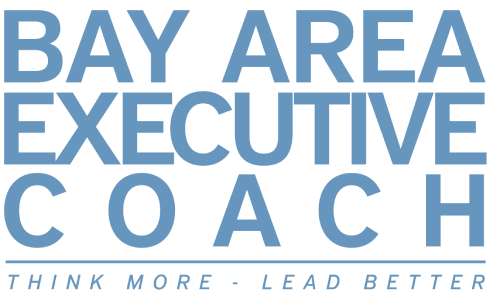Executive and leadership coaching is most often a one-to-one relationship between the coach and the coachee. But, as more and more companies embrace team structures to get things done, the emphasis has shifted to building strong teams of diverse team members as opposed to simply empowering or enlightening executives. And just as executives benefit from having a personal coach, wouldn’t teams also benefit from coaching too?
Team coaching has evolved rapidly to address this issue. Team coaching involves one coach – typically from outside the company – and a team of employees. These coaches are brought in to work with teams to address issues related to team cohesiveness and help accelerate their performance. 
The reason for hiring a team coach is to drive and influence the team towards accomplishing specific goals. This differs from one-on-one coaching where the goals for the engagement might be broader and can involve improving communications skills or growing emotional intelligence for example. Once the team has met their goal(s), the coaching may end or focus on a new goal.
How Teams Form
In 1965, psychologist Bruce Tuckman developed a model for how business teams form and develop. It carries a catchy name: “Forming-Storming-Norming and Performing” that describes each stage as follows.:
Forming: When a new team forms, individuals are often unsure of the team’s purpose, how they fit in, and whether they’ll work well with one another. They may be anxious and curious to get to know new colleagues and each other’s ways of working. They may be energized to get started right away and they could be looking to see who emerges as the team leader.
Storming: Conflict or friction can arise between team members as their true characters – and their preferred ways of working – surface and clash with other people’s. Team members may start to push against established boundaries. At this point team members may challenge the designated leader’s authority or management style, or even the team’s mission. If roles and responsibilities aren’t yet clear, individuals might begin to feel overwhelmed by their workload or frustrated at a lack of progress. This can also lead to face-to-face confrontations and other tense situations.
Norming: Team members now start to resolve their differences, appreciate one another’s strengths, and respect the leader’s authority. Team members will feel more comfortable asking for help and offering constructive feedback. They’ll share a stronger commitment to the team’s goals, and they’ll progress toward it with some level of confidence.
Performing: At this stage the team is working well together and performing as a unified entity pursuing a common goal.
The Role of the Team Coach
Team coaching can have a positive effect on each stage of the team formation model. In the Forming stage, the coach can help with:
- Facilitating team meetings
- Establishing expectations through a team charter
- Assisting with creation of an action plan
- Ensuring each team member is clear on his or her role(s).
In the Storming stage, the coach can facilitate:
- Maintaining accountability for individuals
- Managing any conflicts that arise
- Confronting and addressing team-busting problems like groupthink, micromanaging, social loafing, and unresolved conflict.

And then, in the Norming and Performing stages, the coach can help:
- Keep the team on track and on focus to successfully complete its assigned tasks
- Facilitate team adjournment and disbanding when that time comes.
It’s important to know that an effective coach does not need to be an expert in a given industry. They’re not there to problem-solve but to ask the key questions that help the group decide what’s best for the team. An effective team coach will be skilled at active listening and be able to ask curious questions without trying to sway the group decision to one way of thinking.
The International Coaching Federation (ICF) has recently introduced team coaching competencies, which guide ICF-credentialed coaches in their use of coaching in a team context.
Some Benefits of Team Coaching
If a company’ prevailing work culture is marred by infighting, people working in silos, poor communication or high turnover, the establishment of an effective team effort might be elusive if not downright impossible.
Fortunately, such negative outcomes are not inevitable, regardless of the prevailing situation in a company. Consistent and conscientious team coaching can lead the transformation of worker aggregates into smoothly functioning, sharply focused, and highly effective teams.
Team coaches can help forge strong teams in less time and with less discord than might be the case with an uncoached team. Team coaches can also help surface difficult conversations teams need to have to move to the next stage of development. It’s not uncommon for team members to avoid having the crucial conversations when left on their own. This can stunt a team’s progress and cause members to feel disconnected.
Team coaches can also guide the empowerment of team members to make sure everyone contributes equally, meetings are worthwhile and productive, and the team hits milestones on time and achieves its ultimate goal as planned. 
Lastly, a skilled team coach asks questions that allow for diversity of thought without misunderstandings and keeps the team moving forward toward its goal. If it seems that a team coach has different skills than an executive coach who works with clients 1 on 1, that’s true. The skills of facilitation and mediation may play a role in team coaching whereas they wouldn’t be needed in a typical executive coaching program.
Team coaching is here. It may be more reasonable than 1 on 1 coaching and highly effective for organizations of all sizes to advance the success of mission critical teams. Take time and consider whether it may be right for your organization.
A lot of different elements underlie organizational success. You’ve got to be in the right place, at the right time, with the right product offering and the right team. There’s one other element that needs to be in play to drive sustainable success and that’s a great workplace culture supported by positive emotions. Read our article How are your Teams Feeling Right Now? Measure the Emotional Culture to learn more!
••••
Whether your company seeks one-on-one executive and leadership coaching or team coaching, we are your resource. Please reach out to us with a phone call or via our contact form and we’ll start planning a coaching program to match your particular needs.
Featured photo sourced from Pexels which can be found here and secondary photo also sourced from Pexels can be found here.










